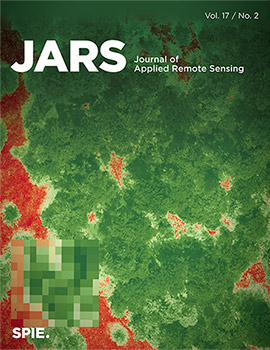Journal of Applied Remote Sensing, Vol. 17, Issue 02, 022206, (November 2022) https://doi.org/10.1117/1.JRS.17.022206
TOPICS: Remote sensing, Image processing, Earth observing sensors, Satellites, Satellite imaging, Spatial resolution, Geodesy, Statistical analysis, Photography, Geographic information systems
The application of remote sensing (RS) in the treatment of problems caused by natural phenomena, such as coastal erosion, has proven to be very effective. An attempt was made to reveal areas that are in a state of erosion along the coastline of the Prefecture of Achaia, elongated ∼185 km. The study area comprised the Gulf of Patras in the west and a part of the Corinth Gulf to the east, which are connected through the narrow and shallow Rion Straits. The system of the two Gulfs consists of a Plio-Quaternary asymmetric grabens trending northeast – southwest (NE-SW) and west-northwest (WNW) – east-southeast (ESE), respectively. The shoreline evolution is estimated for the 1945 to 2016 period with the usage of high-resolution data, using RS and geographic information system techniques. An extension of ArcGIS, the digital shoreline analysis system tool, version 5 beta, has been used for the analysis of shoreline changes, whereas the ERDAS Imagine 2014 was used for the image georeferencing and orthomosaicing process. Various statistical indices were computed including the end point rate and the linear regression rate. Although these tools did not take into concern any of the local geological parameters, the results are similar to the respective derived from conventional survey techniques. Eight sandy areas were revealed that are under erosion regime: the Araxos, Karnari, Kalamaki, Drepano, Loggos, Akoli, Diacopto, and Akrata, while the future shoreline position was estimated for each coast using the forecasting beta tool of the DSASv.5.0, after 10 and 20 years since 2016. We found that it is very likely all sites will show the same trend of change in the next 10 and 20 years, similar to those computed using the available data from 1945 to 2016. The tectonic behavior of the Gulf of Corinth seems that it mainly affects the area’s erosion/accretion regime, while changes in the areas adjacent to the Gulf of Patras are related to natural processes (waves, currents, coastal floods, extreme rainfalls, etc.) and anthropogenic interventions. Moreover, the Araxos and Karnari coasts are at 65.71% and 64.41% under moderate erosion regime with rates of change −0.62 and −1.10 m / year, respectively. Kalamaki, Akoli, and Loggos percentages of 82.35%, 86.67%, and 86.23% are under low erosion, with rates of change −0.28, −0.21, and −0.34 m / year, respectively. Drepano and Diacopto are under low erosion, with rates of change −0.26 and −0.16 m / year, corresponding to 54.55% and 38.67% of the coast, respectively. Finally, Akrata is a coast where erosion prevails at 60.42% with annual rate of change −0.16 m / year, whereas the 43.38% of the coast correspond to stable area.



 Receive Email Alerts
Receive Email Alerts